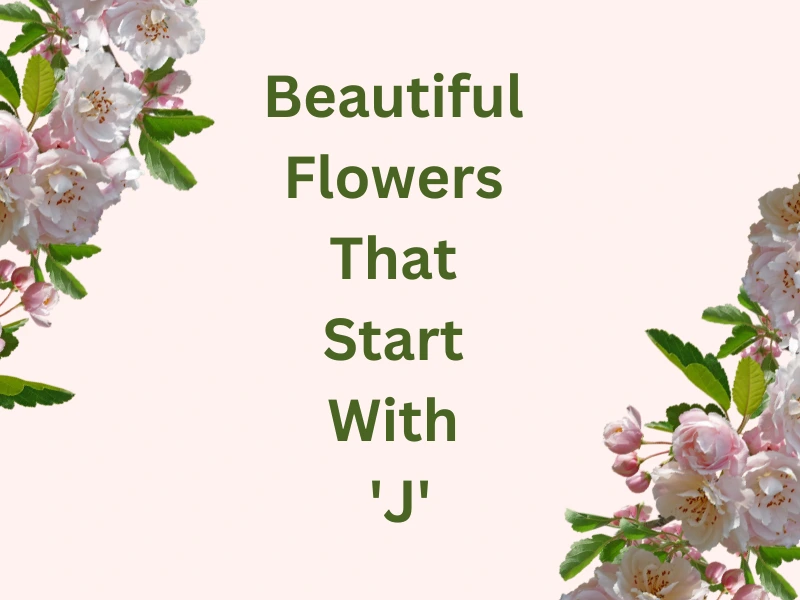
Introduction
Flowers have an inherent charm that captivates us with their colors, scents, and shapes. Each letter of the alphabet brings forth a unique collection of floral wonders. In this article, we will immerse ourselves in the realm of beautiful flowers that start with the letter “J.” From delicate blooms to vibrant blossoms, these flowers have a lot to offer and hold cultural significance in different parts of the world.
Jasmine
Our journey begins with the enchanting Jasmine (H1). This flower is renowned for its heavenly fragrance and is widely used in perfumery and aromatherapy. With numerous species across the globe, Jasmine is often associated with love, purity, and spirituality. In many cultures, it plays a significant role in weddings, religious ceremonies, and festivals.
Jonquil
Next, we encounter the Jonquil (H2), a dainty flower that heralds the arrival of spring. With its trumpet-shaped blooms and delicate fragrance, Jonquils bring a sense of renewal and hope. They thrive in well-drained soil and are popular in gardens and floral arrangements.
Jacaranda
As we continue, we come across the magnificent Jacaranda (H2) trees adorned with clusters of purple-blue flowers. These trees create a surreal sight during their blooming season, gracing landscapes in various parts of the world. Jacarandas are often the subject of photographers’ delight, making them an emblem of beauty.
Jack-in-the-Pulpit
In the shade of the forest, we find the unique Jack-in-the-Pulpit (H2) flower. Its distinctive hood-like structure is reminiscent of a preacher in a pulpit, giving it an intriguing name. This wildflower thrives in moist woodlands and is known for its unusual appearance.
Jacob’s Ladder
Tucked away in meadows and gardens, we encounter the charming Jacob’s Ladder (H2) plant. Its ladder-like arrangement of leaves adds to its allure. In traditional medicine, this flower has been used for its alleged healing properties, which contribute to its popularity.
Japanese Anemone
Moving on, we revel in the elegance of the Japanese Anemone (H2). These graceful flowers are a favorite among gardeners for their exquisite beauty and easy-to-grow nature. In Japan, they hold cultural significance and are associated with luck and protection.
Joe Pye Weed
In the company of butterflies and bees, we discover the tall and attractive Joe Pye Weed (H2). This native North American plant offers nectar and habitat to pollinators, making it a valuable addition to any garden. Its clusters of flowers bring a touch of pink or purple to the landscape.
Johnny Jump-Up
Down in the garden, we encounter the charming Johnny Jump-Up (H2). Despite its small size, its purple, yellow, and white blooms are sure to catch your eye. These edible flowers have been used in culinary delights and herbal remedies for centuries.
Jerusalem Sage
In the arid regions, we find the resilient Jerusalem Sage (H2). Its grayish-green leaves and yellow flowers add a touch of warmth to dry landscapes. This plant has a long history of use in traditional medicine for various ailments.
Justicia
Venturing into tropical territories, we are greeted by the vibrant Justicia (H2) plant. Its striking flowers come in a wide array of colors, attracting hummingbirds and other pollinators. In some cultures, Justicia holds medicinal importance and is used to treat certain health conditions.
Jupiter’s Beard
In gardens, parks, and open fields, we encounter the delightful Jupiter’s Beard (H2). Its clusters of tiny, star-like flowers come in shades of pink, white, and red. This resilient plant can thrive in different climates, making it a popular choice for gardeners.
Japanese Wisteria
Our journey concludes with the breathtaking Japanese Wisteria (H2) vine. Its cascading blooms, ranging from lavender to blue, create a dreamy atmosphere. In Japanese culture, Wisteria symbolizes love, romance, and the transient nature of life.
Jungle Flame
As we bid farewell, we are captivated by the vibrant Jungle Flame (H2) flower. Its fiery red or orange blossoms add a burst of color to tropical landscapes. Some people cultivate it as a houseplant to bring warmth and energy indoors.
Conclusion
The world of flowers that start with the letter “J” is filled with enchanting beauty and cultural significance. From the sweet aroma of Jasmine to the fiery hue of Jungle Flame, each flower has its unique appeal. As we immerse ourselves in the diversity of these blooms, we gain a deeper appreciation for the wonders of nature and the richness of human traditions.
FAQs (Frequently Asked Questions)
- Are all Jasmine flowers fragrant?
- While most Jasmine flowers possess a delightful fragrance, not all species have a strong scent. Some varieties, such as Jasminum officinale, are known for their intoxicating perfume.
- Can I grow Jacaranda trees in colder climates?
- Jacaranda trees thrive in warm and tropical climates. While they can tolerate a mild winter, they may struggle to survive in regions with prolonged frost and freezing temperatures.
- Are Jack-in-the-Pulpit flowers poisonous?
- Yes, the entire Jack-in-the-Pulpit plant contains calcium oxalate crystals, which can cause irritation and discomfort if ingested. It is essential to handle them with care and keep them away from pets and small children.
- Do Japanese Anemone flowers attract butterflies?
- Yes, Japanese Anemone flowers are known to attract butterflies with their nectar-rich blooms. They provide a valuable food source for these pollinators.
- Can I grow Joe Pye Weed in a container?
- While Joe Pye Weed prefers well-drained soil in the ground, some dwarf varieties can be grown successfully in large containers. Ensure the container has good drainage and water the plant regularly.

